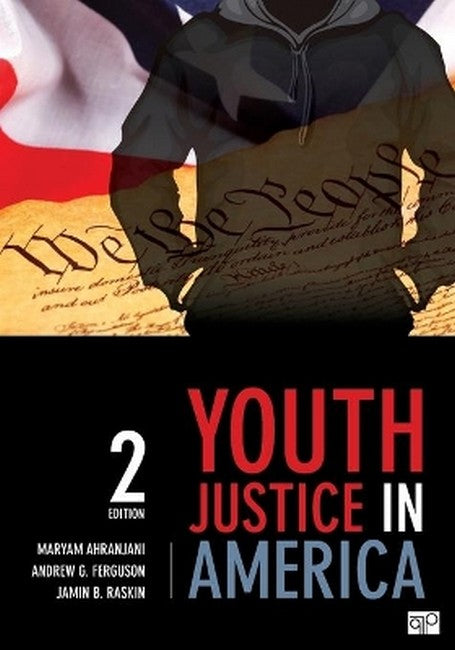Maryam Ahranjani (LLM, University of Pennsylvania Law School, JD, American University Washington College of Law) taught for ten years at the Washington College of Law and is a visiting professor of law at the University of New Mexico School of Law. For five years, she served as associate director of the Marshall-Brennan Constitutional Literacy Project, which places law students across America in public high schools to teach constitutional literacy courses. Ahranjani is also the co-founder (with Andrew Ferguson) of the National Youth Justice Alliance, a non-profit organization that sends lawyers and law students to juvenile detention facilities to teach young people about Constitutional rights and responsibilities. Andrew Ferguson (L.L.M., Georgetown Law Center, JD Univ. Pennsylvania Law School), Associate Professor of Law at the David A. Clarke School of Law, University of the District of Columbia, teaches courses on criminal law, procedure, and evidence. He is author of Why Jury Duty Matters: A Citizen's Guide to Constitutional Action (NYU Press). He is co-chair of the ABA Criminal Justice Section's Student Activities Committee, which runs the "Citizen Amicus Project," a national project to involve law students in current Supreme Court cases. Previously, Professor Ferguson worked as a supervising attorney at the Public Defender Service for the District of Columbia, where he represented adults and juveniles in cases ranging from homicide to misdemeanor offenses. Jamin B. Raskin is professor of constitutional law and the First Amendment at American University Washington College of Law and founder of its Marshall-Brennan Fellows Program, which places law students in public high schools to teach the We the Students constitutional literacy course. A former assistant attorney general for the Commonwealth of Massachusetts, Raskin is an active public interest lawyer, defending the rights of political expression and participation for both adults and young people. He is also the author of Overruling Democracy (2003) and dozens of law review articles, op-eds, and essays on constitutional law.
Request Academic Copy
Please copy the ISBN for submitting review copy form
Description
Chapter 1: American Society, Crime, and the Constitution The Constitution and Crime "We the People" and the War on Drugs: Politicians and Their Families, Athletes, Entertainers Criminal Justice: Not the End of the Story The American System of Juvenile Justice Chapter 2: What Is Crime? Constitutional Limits on Government's Power to Make Crimes The Structure of Criminal Laws Chapter 3: The Second Amendment, Youth, and Schools The Second Amendment and Young People The Second Amendment and Schools Chapter 4: Fourth Amendment: Protection from Unreasonable Searches and Seizures The Right to Be Left Alone The Exclusionary Rule Reasonable Expectation of Privacy Fourth Amendment Search Other Expectations of Privacy What Is a Seizure? Probable Cause and the Warrant Requirement Chapter 5: Exceptions Swallow the Rule: Warrantless Searches Exception 1: Emergency Circumstances Exception 2: Plain View Exception 3: Search Incident to an Arrest Exception 4: Automobile Exception Exception 5: Consensual Searches Exception 6: Stop and Frisk Exclusionary Rule Review Chapter 6: School Searches Search of Belongings Drug Testing and After-School Activities Drug Testing for All Students? Strip Searches Metal Detectors and the Constitution Chapter 7: Fifth Amendment: Privilege against Self-Incrimination The Screaming Eagle Protections against Self-Incrimination Juveniles and the Miranda Warnings What Is Custody? Pull Over, Jack What Is Interrogation? The Dangers of False Confession Chapter 8: Sixth Amendment: Right to Counsel The Right to Legal Counsel Role of Legal Counsel Role of the Defense Right to Counsel for Juveniles Right to Effective Counsel Reality of Ineffective Counsel A Quick Career Quiz Chapter 9: Cruel and Unusual Punishment The Death Penalty Today The Death Penalty and Juveniles Turning Over a New Leaf? Juveniles and Life Imprisonment Without Parole Chapter 10: The Future of Youth Justice The Goals of Criminal Punishment Record Prison Populations The Racial Dynamics of the Criminal Justice System Felon and Ex-Felon Disenfranchisement Gendered Offenders Life in Prison without Parole

